Analyze in Excel in Power BI Service
In the Power BI service, by using the Analyze in Excel feature, we can create an Excel workbook containing the entire semantic model for a specific Power BI report and analyze that semantic model in Excel using PivotTables, Pivot Charts, and other Excel features.
Permissions Required • User must have “Build” permission to the Power BI semantic model or have at least a Contributor role in the Power BI workspace containing our semantic model.
Step 1: To analyze the report in excel. Open a Power BI report in the Power BI Service. Select Export and then click on Analyze in Excel from the dropdown.
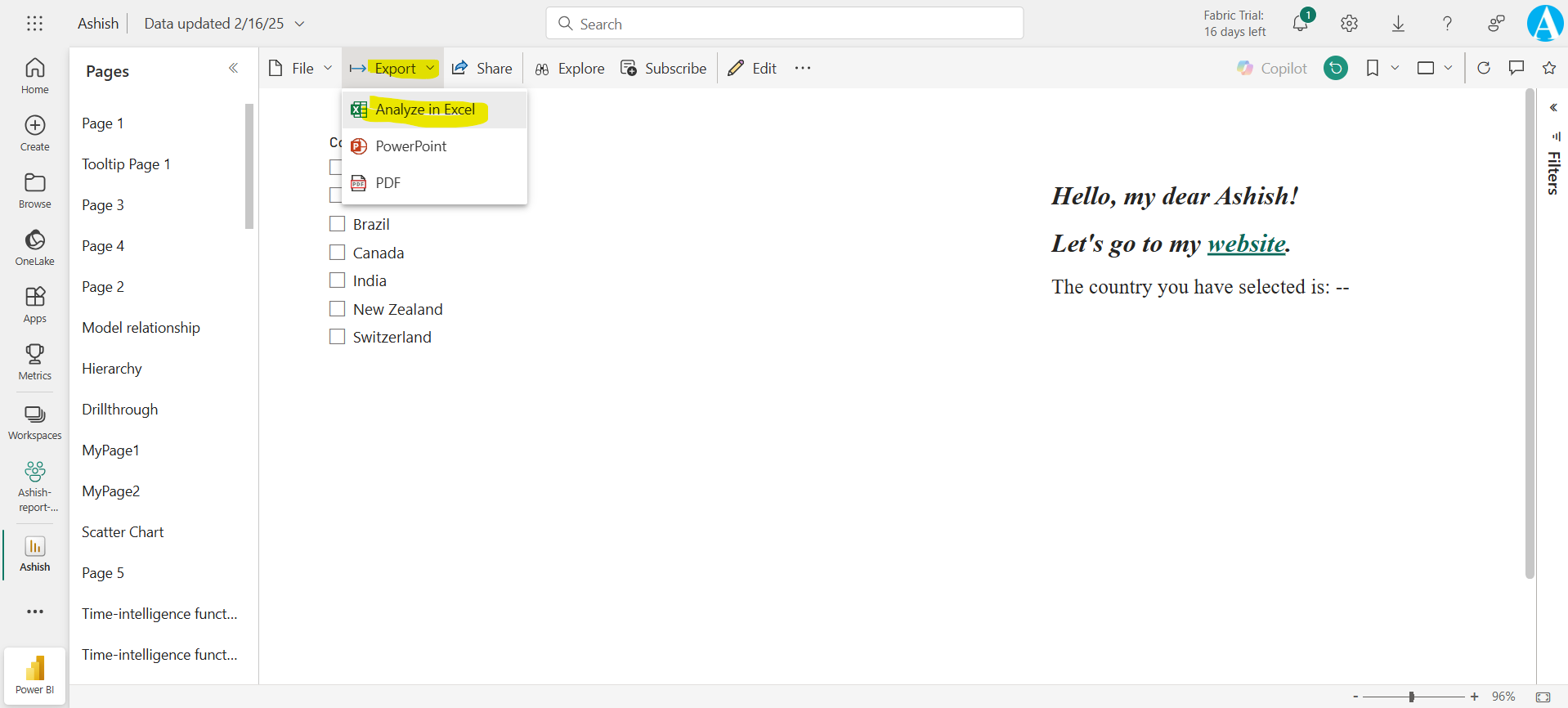
Alternatively, go to the workspace containing our Power BI semantic model or report, select More options (...) next to the semantic model or report name and select Analyze in Excel.
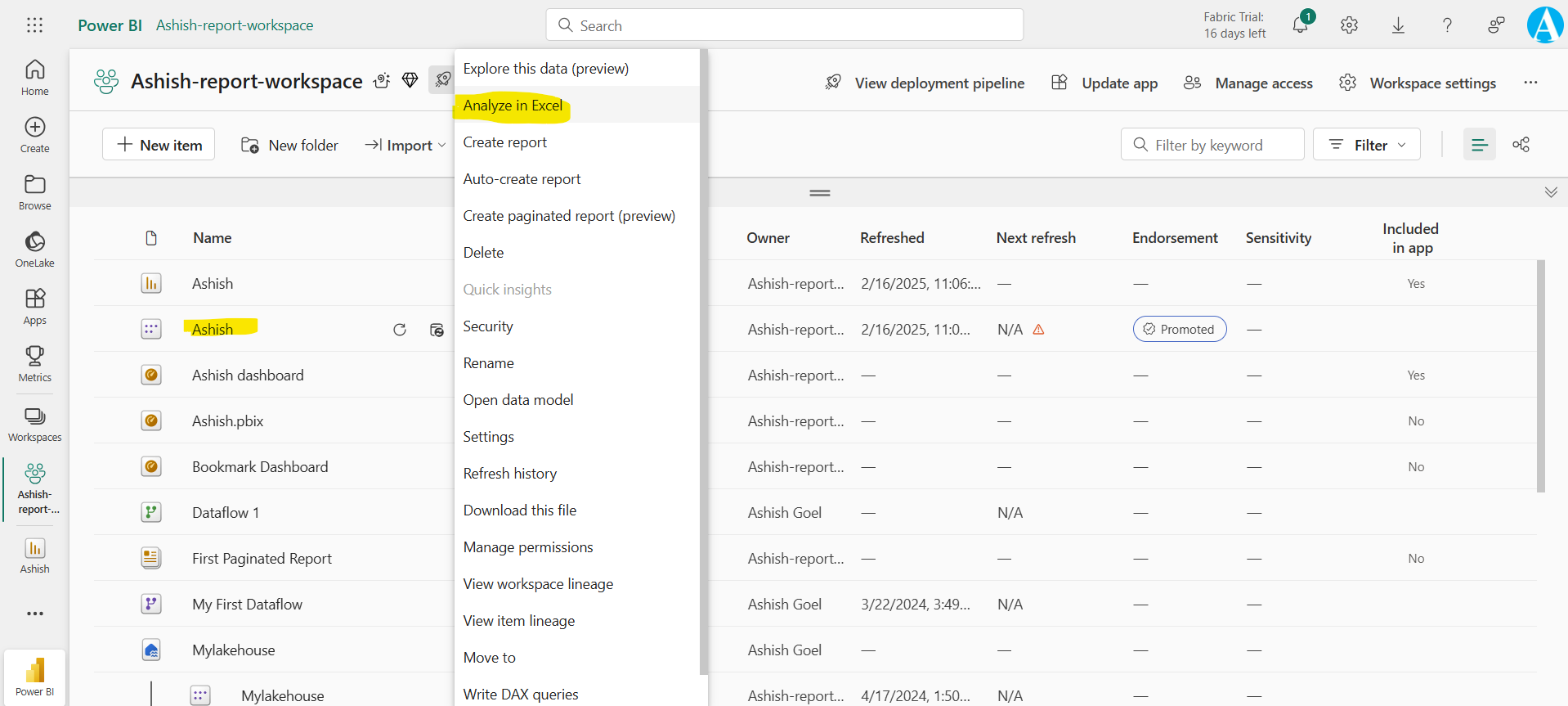
Alternatively, select a semantic model in a Power BI workspace. In the Semantic model details page, select Analyze in Excel on the menu bar.
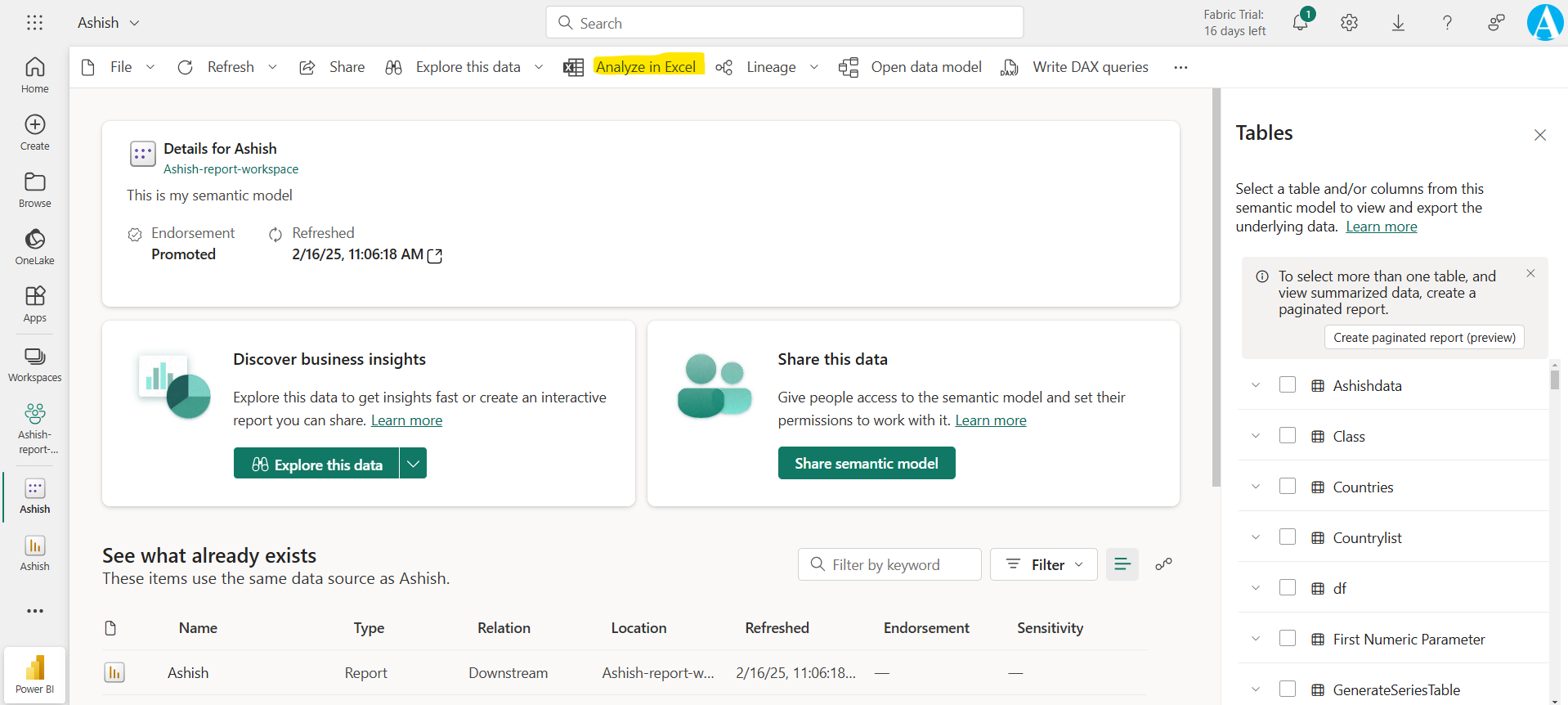
After we select Analyze in Excel, Power BI generates an Excel workbook and saves it to our OneDrive SharePoint account. It has the same name as the Power BI report, so we can open the workbook directly in Excel for the web.
When we choose Open in Excel for the web, our Excel workbook opens in a separate browser tab.
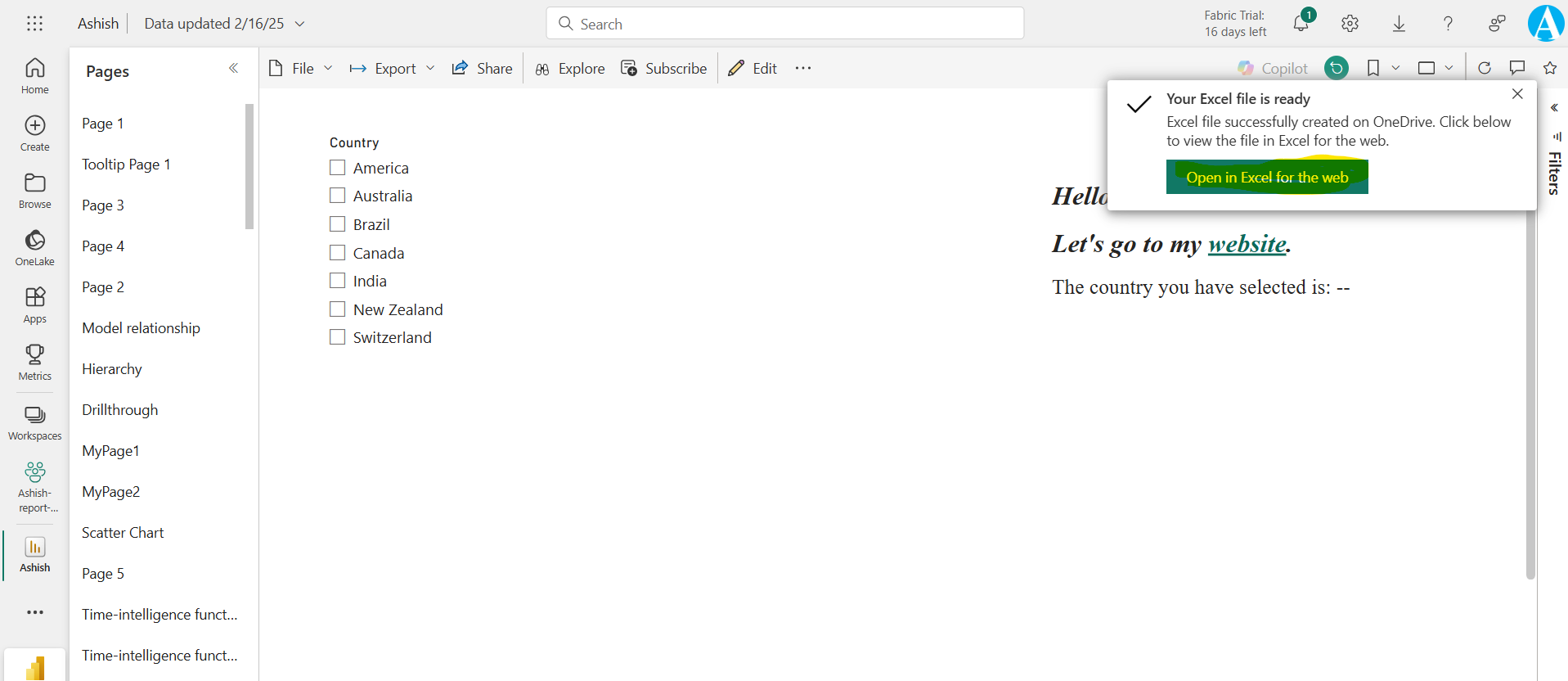
To enable the Power BI query in Excel, select Enable Content.
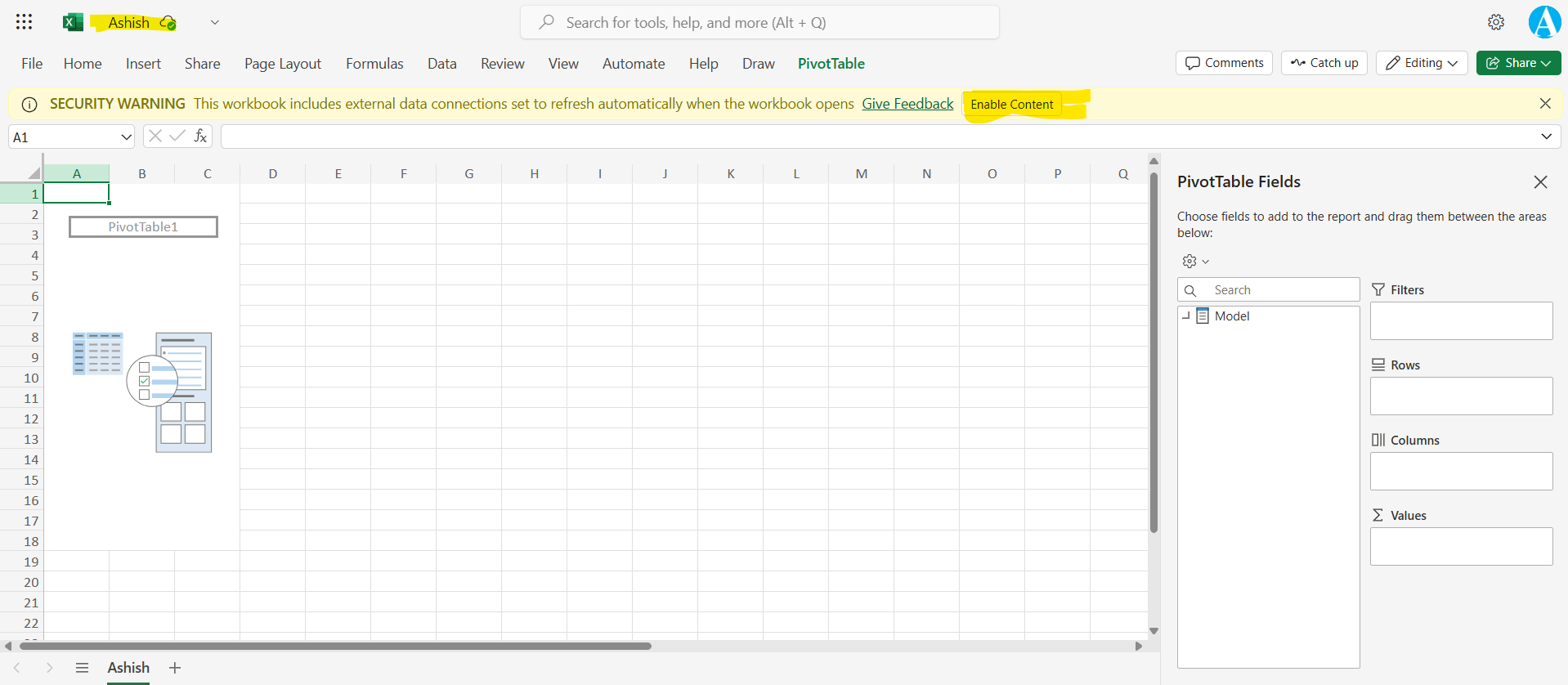
Now, we can see the tables and measures from our Power BI semantic model in the PivotTable Fields. We can start building our PivotTable reports in Excel.
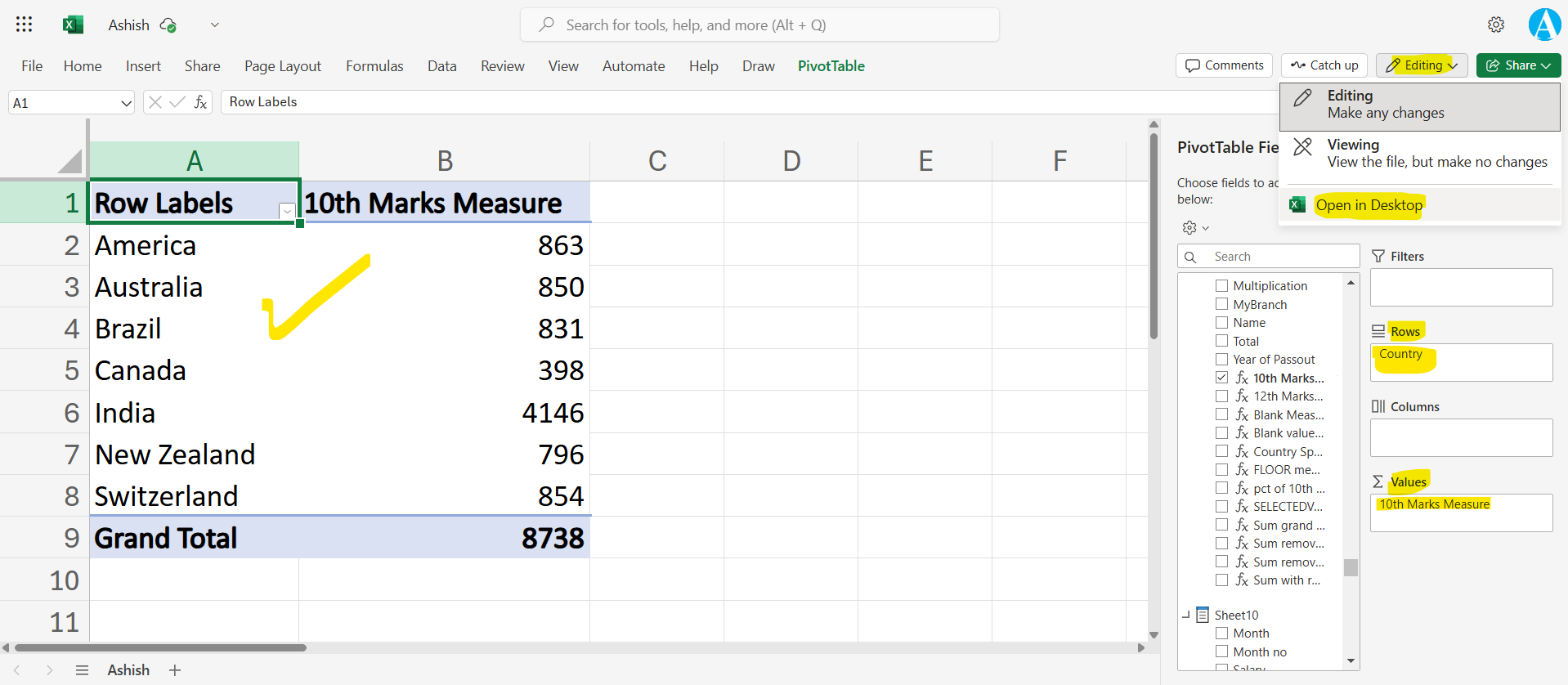
If we want to work with our data in the Excel Desktop app, select the Editing button in the ribbon and select Open in Desktop app.